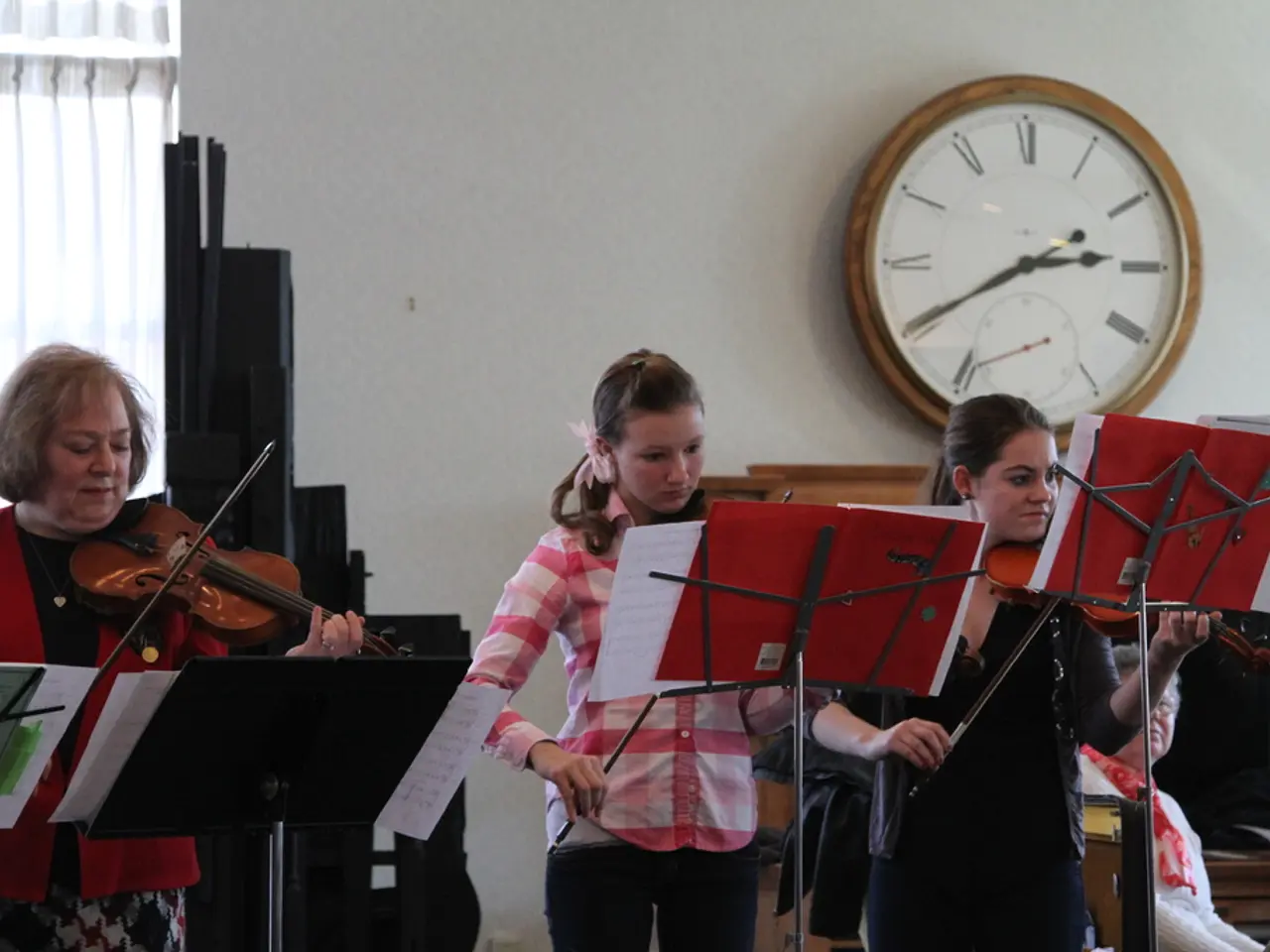A recent research reveals that listeners' heart rates and breathing patterns align during a classical music performance
In a fascinating new study led by Professor Wolfgang Tschacher from the University of Bern in Switzerland, it has been discovered that audience members experience a degree of synchronization during classical music concerts. The study, which was conducted in Berlin, involved 132 participants aged 18 to 85, and was published in the journal Scientific Reports.
During the study, the participants attended concerts of three different string quintets: Beethoven's Quintet in C minor, Brahms' Quintet No.2 in G major, and 'Epitaphs' by Brett Dean. The findings suggest that synchronization was more pronounced during the concerts of Brahms and Dean compared to Beethoven.
The study found that audience members' breathing rates synced up the most, followed by their heart rate and level of excitement, measured by small increases in sweat on their fingertips. Interestingly, those who value social interaction during concerts were less likely to have a synchronized response to the music.
Previous studies have found that musicians and conductors also have synchronized physical reactions to music. However, this study focuses on the audience's response, providing new insights into the communal experience of classical music concerts.
The study also found that openness to new experiences, as a personality trait, was a factor in audience synchronization. Those with agreeable personalities who enjoy new experiences were more likely to sync up with others. This suggests that these individuals may be more likely to concentrate on the music at a concert, leading to a shared emotional engagement.
Professor Tschacher suggests that synchronization may occur on a greater level outside of the trial. The body sensors used in the study found that audience members became more physically synchronized with each other during the concerts, indicating a shared experience. The study also suggests that synchronization may occur across different genres of music, opening up exciting possibilities for future research.
The test group wore belts with sensors during the concerts, and the participants completed a personality test as part of the study. However, the three individuals who participated in a musical concert event and whose personality traits were examined together with the extent of physiological synchronization with the music, as well as the audience ensemble, are not named or identified in the provided search results.
In conclusion, this study provides valuable insights into the communal experience of classical music concerts. The findings suggest that audience members are emotionally engaged in the music when they react to it in the same way, creating a shared experience. Whether this synchronization occurs across different genres of music remains to be seen, but this study opens up exciting possibilities for future research.








